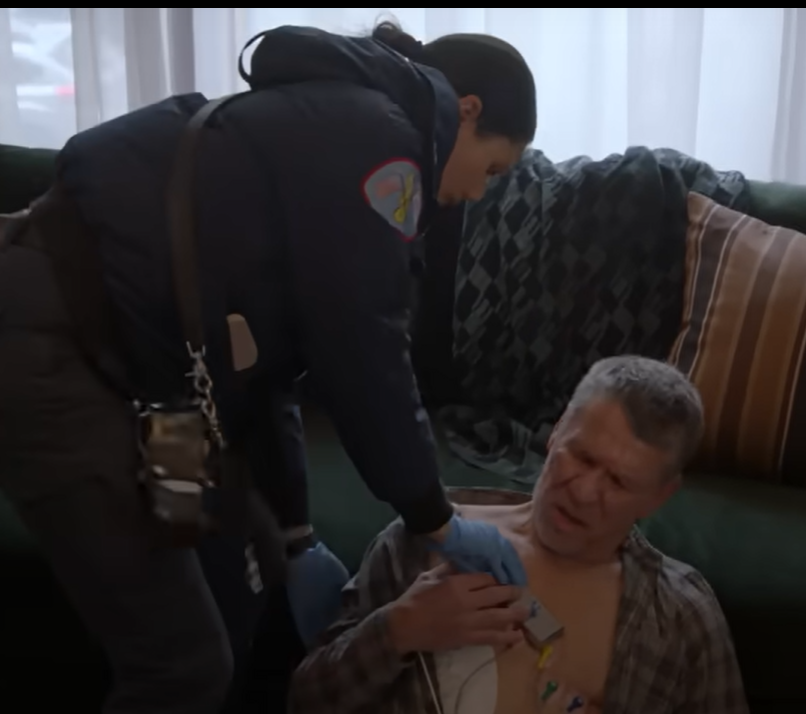In one of the most intense medical emergencies of the season, Firehouse 51 responds to a terrifying call when a man’s life hangs in the balance—not because of a fire or fall, but because of a piece of technology meant to save him.
The episode begins with a harrowing 911 report: a neighbor hears cries for help from across the hall. It’s Bill—an older man who lives alone and has been acting strange. Concerned, the caller convinces the building’s superintendent to open Bill’s apartment door. What they find sends immediate chills down the spine.

Bill is on the floor, convulsing in pain, groaning, disoriented. The paramedics arrive within seconds. Sylvie Brett and her team rush in, only to find the cause is internal: his pacemaker/defibrillator is misfiring—repeatedly.
“I don’t know… maybe 10 times,” Bill gasps, clearly exhausted and traumatized. “I keep blacking out.”
That number sends shock through the team. Most patients can’t survive more than 15 defibrillator shocks. Time is not on their side.
The paramedics quickly run a 12-lead EKG to assess Bill’s heart rhythm. His heart is functioning in a normal sinus rhythm—but the defibrillator is malfunctioning, shocking him despite no arrhythmia. In essence, Bill is being electrocuted by the very device meant to save his life.
With every passing minute, the danger increases. Bill’s body convulses again—another shock. He slips into unconsciousness.
The team realizes they need to act fast. If they can’t stop the misfiring defibrillator, Bill won’t survive the trip to Chicago Med.
Then one of them remembers: some defibrillators have a safety override activated by magnets. A strong magnetic field can temporarily disable the device—a medical emergency workaround rarely seen in the field.
The search begins. Time ticks.
A team member races to the ambulance and grabs a field magnet from the medical kit. With everyone focused, they place the magnet over Bill’s chest—desperately hoping to trigger the override.

Beep.
The shocks stop.
“It’s working,” one of them breathes, relief washing through the room like a tide.
With the defibrillator temporarily disabled, they place defib pads on Bill’s chest as a backup and prepare him for transport. The stair chair is readied, and the crew stabilizes Bill’s vitals, monitoring him closely in case pacing is required en route.
Bill is alive—but fragile.
“We are not letting this man die today,” the medic says with quiet resolve. It’s not just about saving a life; it’s about protecting the dignity of someone betrayed by the very technology that was supposed to keep them safe.
As the ambulance races through the city streets, we’re reminded of the razor-thin line between safety and danger—and how heroes in navy and yellow uniforms walk that line every single day.
Bill’s fate remains uncertain, but Firehouse 51 did what they do best: act fast, stay calm, and never give up.